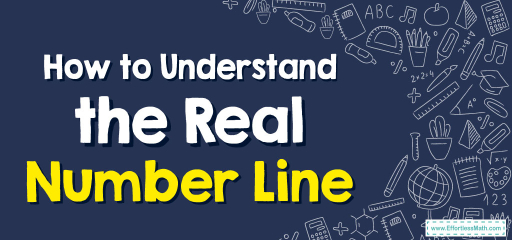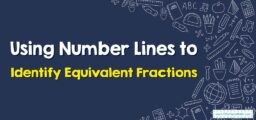How to Understand the Real Number Line

Step 1: Distinction Between Rational and Irrational Numbers
- Rational Numbers (Q): These can be expressed as the quotient or fraction \(\frac{p}{q}\) of two integers, where \(p\) (numerator) and \(q\) (denominator) are integers and \(q≠0\). Examples include \(\frac{1}{2}, 5, -3\), etc.
- Irrational Numbers: Numbers that can’t be written as simple fractions or ratios. This set includes numbers like \(π\) and \(\sqrt{2}\), which don’t terminate or repeat in their decimal form.
Step 2: Bridging The Gap – The Union
Step 3: Visualizing the Infinite: The Real Number Line
Step 4: Diving Deeper: Intervals and Bounds
- Open Intervals: Represented as \((a, b)\), it includes all numbers between \(a\) and \(b\) but not the endpoints themselves.
- Closed Intervals: \([a, b]\) includes all the numbers between and including \(a\) and \(b\).
- Infinite Intervals: These can be open or closed on one side and stretch infinitely on the other, like \([a, ∞)\) or \((-∞, b]\).
Step 5: Density Property
Step 6: Beyond the Real – A Glimpse
Step 7: Conclusion
Examples:
Locate \(−2.5\) on the number line.
Solution:
Consider the number \(−2.5\). This is a rational number, and on the real number line, it would be located to the left of \(0\) and halfway between \(-2\) and \(-3\).
Related to This Article
More math articles
- Full-Length SSAT Upper Level Math Practice Test
- How to Identify Graphs of Basic Functions
- 6th Grade SOL Math Worksheets: FREE & Printable
- How Is the SHSAT Test Scored?
- 7th Grade MAP Math Worksheets: FREE & Printable
- Top 10 ACT Math Prep Books (Our 2023 Favorite Picks)
- 5 Tips on How to Score Higher on SAT Math
- 6th Grade MAAP Math Worksheets: FREE & Printable
- 8th Grade KAP Math Worksheets: FREE & Printable
- Best Online Math Tutoring Devices


























What people say about "How to Understand the Real Number Line - Effortless Math: We Help Students Learn to LOVE Mathematics"?
No one replied yet.